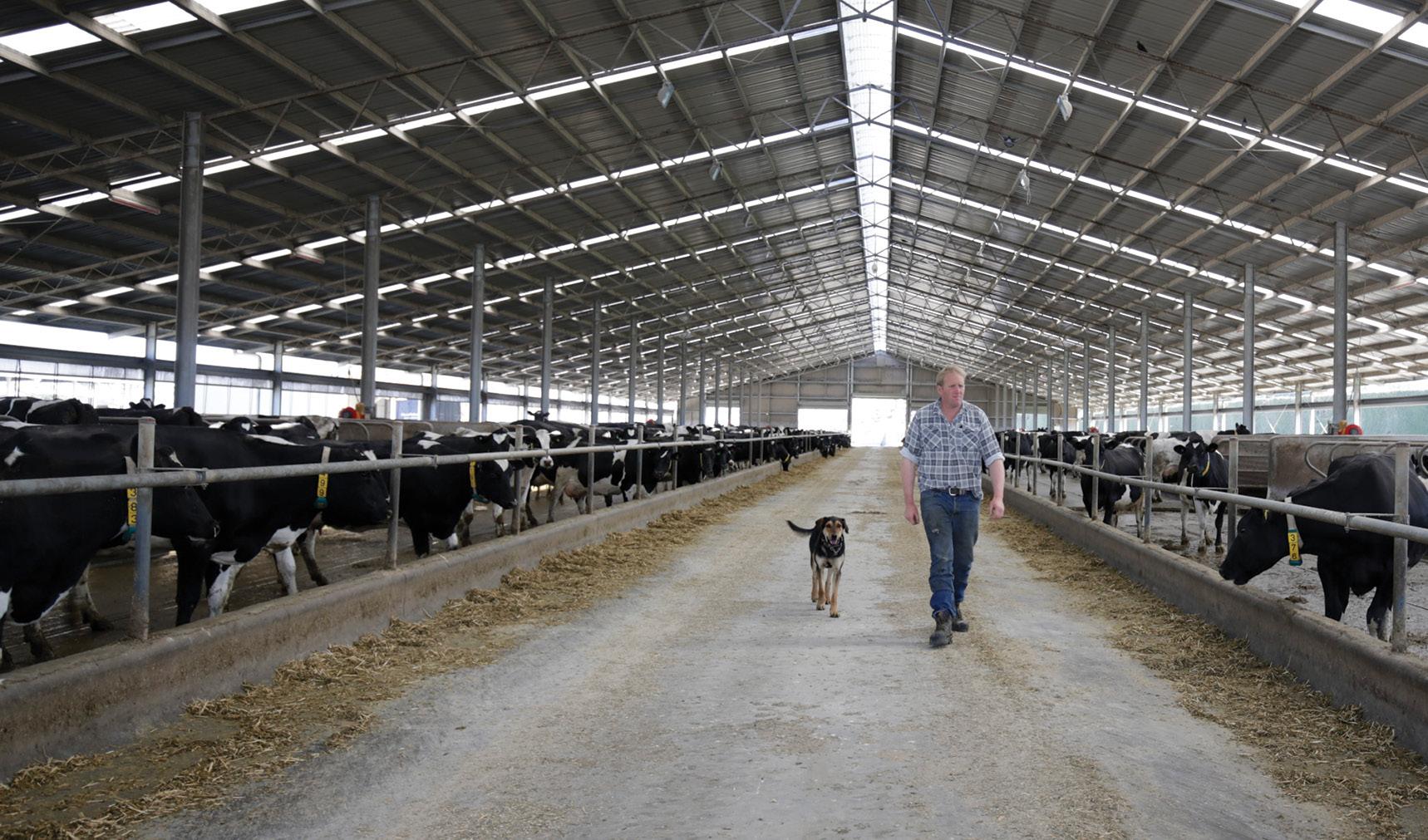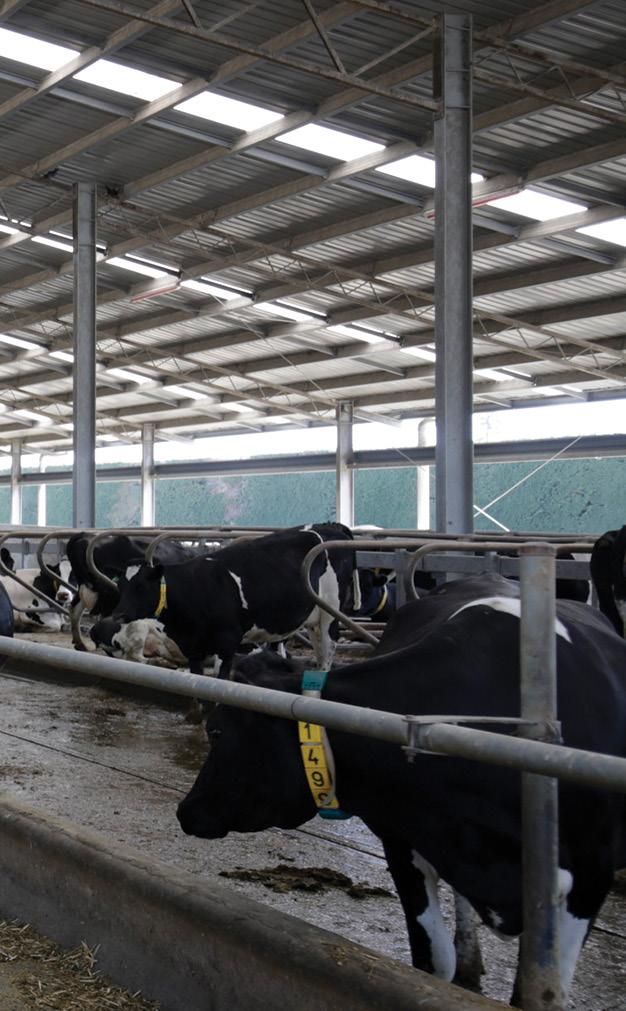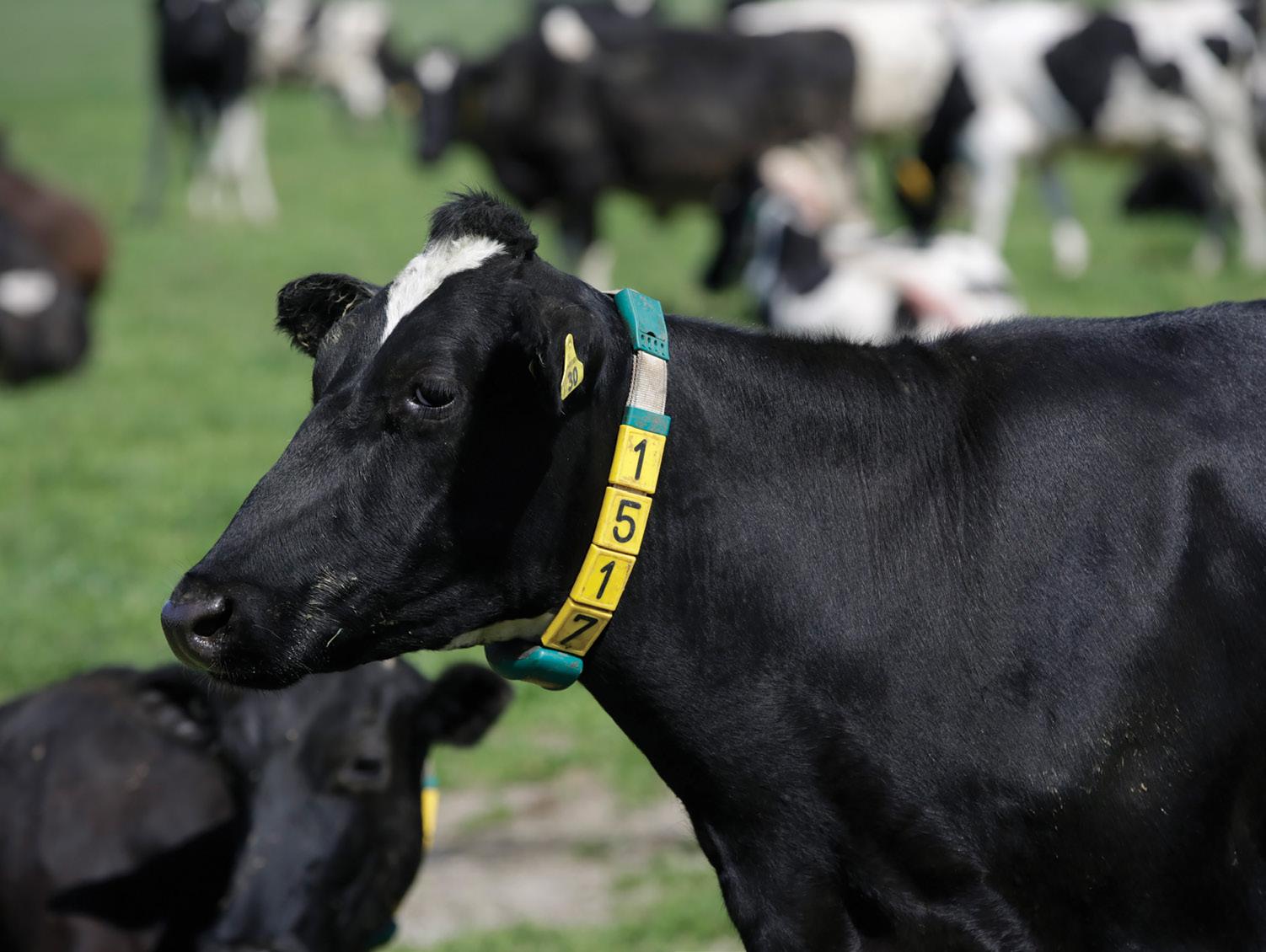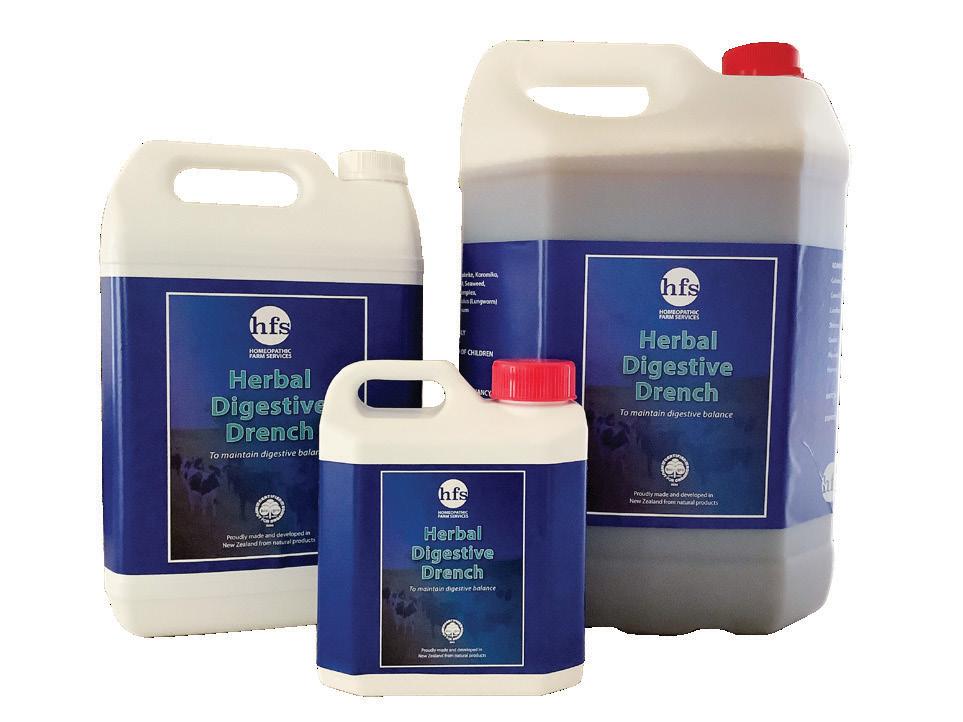
8 minute read
Collar-ing technology
STOCK TECHNOLOGY
Technology makes its mark on the Coplands’ mid-Canterbury property where generations of the family have farmed for more than 140 years. Anne Lee reports.
You won’t find anyone up on the stand spotting heats on the Coplands’ 1500-cow Canterbury dairy farm and you won’t find just black and white cows in the huge barns either.
While they may have more than 100 years of farming history in the area, the intergenerational 720-hectare Chertsey farm is anything but stuck in the ways of old.
Technology is at the forefront, systems are challenged and new opportunities grabbed with both hands.
James Copland settled land in the area in 1877 and at one stage owned 12,000 acres between Dunsandel and Rakaia.
It’s hard to know what he’d make of cows walking around with collars that can accurately indicate heats and illness or milking parlours set up to automatically draft off the animals that need to be attended to or even robots that sweep feed up to animals housed in sheds the size of small villages.
The huge black cattle fed secret diets from recipes devised in Japan would also surely have him reeling.
All of that and more is going on at Chertsey where Neville and Marilyn with sons Craig and Wayne are running an integrated dairy, Wagyu beef and cropping operation that also has some horticulture on the side for good measure.
Neville took over from his father in 1987 and in 2008 the family converted to dairying from bull beef and cropping.
Craig says they bought autumn calving cows as part of the herd and with the new 60-bail farm dairy finished in March decided to take on a winter milk contract to fast track some income.
Although they had an 800-cow feedpad, two wet winters in a row saw them invest in a 5000 square metre Calder Stewart-built


Left: Craig Copland in the large barn housing the winter milking cows; the cows are feed a mixed ration and milked three times a day. Above: The cows all wear rumination collars, and Craig says they are picking up issues a lot faster than would be otherwise. A drop in eating and rumination comes ahead of other symptoms Below: The barn housed cows get a total mixed ration and the outside cows pasture and a partial mixed ration.
free-stall barn in 2014. It has 300 cubicles on each side of a wide central feed lane with waterproof mattresses for bedding and is laid out to give plenty of room for cows to loaf around.
To run a high input system profitably feed conversion efficiency is vital, Craig says.
Their cows have averaged 780kg milksolids (MS)/cow when milked three times a day and taken at a 305-day lactation mark from 25kg drymatter (DM)/ cow of feed fed in the barn.
To make the most of higher paying winter milk contracts and to avoid cow wastage that would come from seasonal block mating, the Coplands are calving three times a year.
Cows are housed over their peak milking period with later lactation cows outside. The 600 cows indoors are fed a total mixed ration while those outside are

also being supplemented with a partial mixed ration.
“We never really get under 1000 cows milking at any time of the year,” Craig says.
There’s no grass at all in the housedcows’ diet, instead it’s made up of maize silage, lucerne, maize grain, straw, wheat, barley and protein such as soy and canola.
Dairy Production Systems nutritionist Dr Sue Macky is the farm’s nutritionist, monitoring feed inputs and cow health.
MATING AT THE CLICK OF A BUTTON

They mate in autumn and early spring for nine weeks and have a “tidy up” mating in November for four weeks.
With cows at various stages of lactation Craig says a herd management system is a must too and the farm invested in the GEA technology back in 2011 which could talk to their in-shed milk monitoring system DairyPlan, also from GEA.
They’ve recently upgraded the cow collars to the company’s Cow Scout collars.
The technology includes a sensor on the collar that senses where the cow’s head is positioned so it knows when she’s head down eating, ruminating or getting active, moving around and rubbing on other cows.
Craig has the system set to send information back to the farm dairy from the collars every three hours.
An antenna on top of the farm dairy picks up signals sent from the collars up to 800m away so for almost all of the farm the data can be sent back throughout the day. If the cows are outside the range the data is automatically sent as soon as they come back within the 800m radius.
“I can jump on the computer or my phone any time and get an update of how many cows are going to be drafted off for mating at the next milking.
“They’re very accurate at picking up heats and when you see the graphs it’s just so obvious.
“The new graphs that come with the Cow Scout are very clear and easy to read – a lot easier than the Res 2 graphs we used to have,” Craig says.
He’s fully confident in the system and says it’s not missing any heats based on what he’s seen.
Mating starts at the click of a button.
Craig simply double clicks on the activity formula for mating, sets the time he wants the cows drafted out between, so that it coincides with milking, and by the end of milking all the cows that have indicated heat will be in a pen on the yard ready to be brought back on to the platform for the AI technician.
Craig also has the system set to pick up cows based on a drop in rumination and draft them off into another pen.
The system is smart enough to distinguish between heats and an animal health alert by crunching all the data
Craig Copland, and Roger Alagos, who looks after the milking of the cows three times a day, with Craig’s father Neville Copland in the rotary dairy.
the collars send in. Craig can quickly see which cows will be in which pen via the dashboard on the programme and says he can then look more closely at an individual cow’s history to help determine what’s going on.
Cows in the rumination pen are brought back onto the platform and will have their temperature checked, have each quarter stripped and given a good once over.
“We’re picking up issues a lot faster than we would be otherwise. A drop in eating and rumination comes ahead of other symptoms.
“We’re getting dirty cows treated more quickly and that helps them getting back in calf and with their milk production.
“We’re also picking up cows that are suspect for things like LDA (left displaced abomasum) as soon as they’re starting and getting on top of any mastitis really quickly.
“We don’t treat anything with antibiotics unless it’s clinical but we can take steps to help stop it coming to that and we’ll pick up clinicals a lot faster and easier than we otherwise would in a big herd situation like this.”
BLACK ORIGIN WAGYU BEEF
Not long after they built their first barn, the Coplands also got together with

former All Black Andy Ellis who, thanks to his rugby experiences in Japan, was also developing a Wagyu beef Business - Black Origin.
Craig said the numbers stacked up and the opportunity looked like one he didn’t want to pass up.
“For us there was more risk in getting a few years down the track and kicking ourselves for not getting into it.”
They started crossing the dairy cows with Wagyu and rearing cattle prized for their fat marbled beef.
Last year they took the plunge and invested in an even bigger second barn this time for the Wagyu and this time doing it all themselves with Neville doing a lot of the metal work including cutting the
Wagyu dairy bulls are grown to over 800kg with a marbling score of 7+, for the Black Origin Beef label.
huge steel beams that hold the structure in place.
The barn can house 900 animals with
wide lanes layered in deep sawdust for
bedding.
Like the dairy cows much of their feed is
grown onfarm with Wayne managing the
cropping side of the business as well as an
apple orchard diversification that includes
47,000 trees.
The animals spend their earlier months
outside but are then brought into the barn
to be fed for 420 days on a TMR diet. the Japanese Wagyu Association.
They can double their weight in 12 months and kill out at about 800kg liveweight at 28-30 months, Craig says.
“The heaviest animal so far has been 960kg at just over three years old.”
Of the last group of animals to be processed, 80% had a marbling score (MS) of 7+.
The score ranges from 3 to 12 and indicates the amount of intramuscular fat that creates the buttery flavour and texture
HFS - Dairy Exporter Nov 2020 - 80x230mm-5mmbleed-PRINT.pdf 1 23/10/20 8:18 AM Its precise recipe is a secret supplied by of the meat when cooked.
Both Craig and Neville have travelled widely and have seen for themselves the opportunities for New Zealand produce.
They’re not fazed by plant-based meats or milks and believe there will always be a market for high quality food.
“That’s the beauty of what we’re doing here. We’ve got control over most of the feed going in by growing our own crops, we’re breeding and rearing our own animals and we can use technology to make sure the quality is always right up there,” Craig says.

TALK TO THE EXPERTS FOR FARMING SUPPORT
07 858 4233
farmservices.nz
info@farmservices.nz










